You want to save money on tamoxifen without rolling the dice on a sketchy website. Fair. There are legit ways to pay very little for generic tamoxifen in the U.S.-often just a few dollars a month-while keeping your care on track. The catch? You need to buy from a real, state‑licensed pharmacy that requires a prescription, protects your privacy, and ships quickly. This guide shows you exactly how to do that today, what price is reasonable in 2025, and how to avoid counterfeit meds.
Here’s what you’ll get: a quick primer on the drug you’re buying, the safest places to order online in the U.S., real‑world price ranges (and how to push them down), a red‑flag list to dodge bad actors, and a simple checkout plan you can follow right now. No fluff-just what works.
What You’re Buying (and What “Generic” Really Means)
Generic tamoxifen is the same active ingredient as the brand Nolvadex: tamoxifen citrate. Pharmacists just call it tamoxifen. In the U.S., it’s an FDA‑approved prescription medicine used mainly for hormone receptor-positive breast cancer treatment and risk reduction. Typical tablet strengths are 10 mg and 20 mg. Your oncologist decides the dose and duration. Don’t change anything without your doctor’s okay.
“Generic” doesn’t mean “less effective.” The FDA requires generics to match the brand on active ingredient, strength, dosage form, bioequivalence, and quality. You may see different manufacturers-Teva, Sandoz, Accord, Apotex, Aurobindo, and others. If you’ve been sensitive to brand switches before, ask the pharmacy to keep the same NDC or manufacturer when possible.
Storage is simple: room temperature, dry place, original container. No refrigeration. That makes mail shipping straightforward as long as the pharmacy packs it properly.
Key safety notes (the short version): common effects include hot flashes, night sweats, vaginal discharge or bleeding, and nausea. Serious but less common risks include uterine cancer, stroke, and blood clots-these are highlighted in the prescribing information with boxed warnings. Some antidepressants (strong CYP2D6 inhibitors like paroxetine or fluoxetine) can lower levels of tamoxifen’s active metabolite; if you’re on one, ask your clinician about alternatives like venlafaxine, citalopram, or escitalopram. Tamoxifen can harm a developing fetus; use reliable contraception and talk with your clinician if pregnancy is possible. Sources: FDA Prescribing Information (DailyMed, 2025), ASCO/ESMO endocrine therapy guidance (2024-2025).
Bottom line: you can buy generic tamoxifen online safely in the U.S., but you must use a licensed pharmacy that requires a prescription. If a site says “no Rx needed,” close the tab. That’s not a shortcut-it’s a risk.
Where to Buy Safely in the U.S. (and How to Verify a Pharmacy)
In the U.S., you have three legitimate online options:
- Your insurance plan’s mail‑order pharmacy (e.g., CVS Caremark, Express Scripts, OptumRx). Often best for 90‑day fills and low copays.
- Big‑name retail chains with online ordering and home delivery (e.g., Walgreens, CVS, Walmart, Costco). Good selection, quick shipping, easy to use. Note: in many states, including Washington, you can use Costco’s pharmacy without a membership.
- Independent, state‑licensed online pharmacies. Some focus on transparent cash pricing and fast delivery.
Verification steps you can do in two minutes:
- Check for state licensing: the site should list its licensed pharmacy location and the state(s) where it ships. Look for the state board of pharmacy seal or license number and verify it on that state board’s website.
- Look for accreditation: NABP’s .pharmacy program or VIPPS. These signals are widely recognized by regulators. (NABP’s 2024 review found the vast majority of online drug sellers violated standards; accreditation matters.)
- Prescription required: a legitimate site requires your doctor’s prescription or will contact your prescriber for you. No Rx = walk away.
- U.S. address and phone support: a real pharmacy has a physical U.S. location and a way to reach a pharmacist for questions.
- Normal payment methods: major credit/debit cards. Be wary of crypto‑only or wire‑only sites.
Quick red‑flags that usually mean “don’t buy”:
- Prices that look impossibly low (pennies for a month’s supply) and the site ships from abroad.
- No prescription required, no pharmacist counseling, no U.S. address.
- Pushes you to pay with Bitcoin, gift cards, or wire transfer.
- Copy‑paste reviews, bad spelling, stock photos of pills that don’t match U.S. products.
Why this matters: The National Association of Boards of Pharmacy has repeatedly reported that about 95% of online drug sellers it reviews are unsafe or noncompliant. FDA’s BeSafeRx campaign (2025) gives the same advice-use state‑licensed pharmacies, insist on a prescription, and verify before you buy.
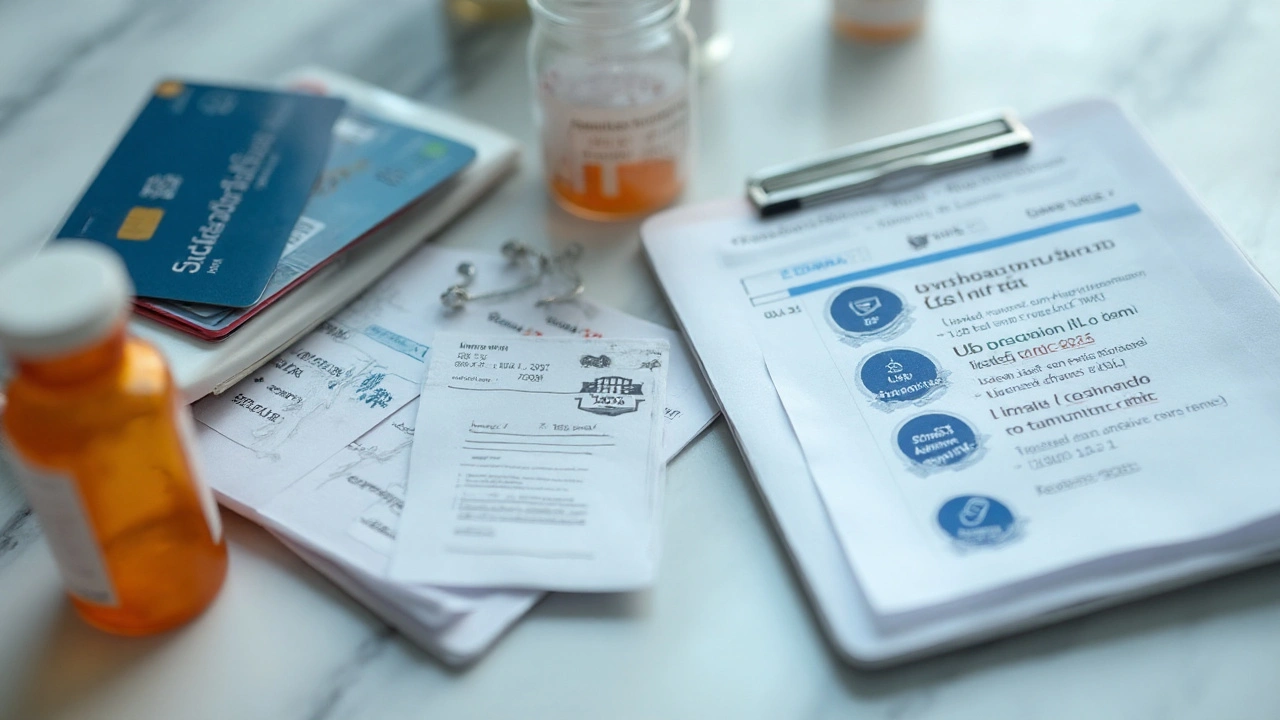
Real Prices in 2025-and How to Pay Less Without Cutting Corners
Generic tamoxifen is one of the least expensive cancer medicines when bought correctly in the U.S. If you’re paying eye‑watering prices, something’s off. Here’s what “cheap but legit” looks like in 2025, drawn from typical cash‑discount data and insurer mail‑order pricing:
| Product | Channel | Typical 30‑day price (2025) | Typical 90‑day price (2025) | Notes |
|---|---|---|---|---|
| Tamoxifen 20 mg tablets | Cash with coupon (major chains) | $4-$12 | $10-$25 | Use a widely known discount card; price varies by store and manufacturer. |
| Tamoxifen 20 mg tablets | Insurer mail‑order (90‑day) | - | $0-$15 | Many plans price this as Tier 1; check your portal for 90‑day rates. |
| Tamoxifen 20 mg tablets | Independent online pharmacy (cash) | $6-$15 | $15-$30 | Transparent pricing, quick shipping; verify licensing. |
| Tamoxifen 20 mg tablets | Local retail counter price (no coupon) | $15-$40 | $35-$80 | Ask the pharmacist to run the cash‑discount price if you don’t use insurance. |
Where these ranges come from: cash‑discount engines (e.g., GoodRx, SingleCare) sampled in Q3 2025, plus anecdotal retail quotes in major U.S. cities and insurer mail‑order tables. Your exact number depends on your zip code, store, and manufacturer. But if you see $3-$12 for 30 tablets with a legitimate coupon at a big chain, that’s normal.
How to pay the least today:
- If you have insurance: check your plan’s mail‑order price for a 90‑day fill. Many Tier 1 generics are $0-$10 per 90 days. If your retail copay is oddly high, ask the pharmacy to compare the cash‑discount price and your copay; you can choose whichever is cheaper (you usually can’t combine them).
- If you’re paying cash: pull up two or three discount cards on your phone and compare the final price at nearby pharmacies. Show the best one to the pharmacist and ask them to process it as a cash transaction.
- Ask for a 90‑day prescription: if your prescriber allows, the per‑tablet cost usually drops at 90 days, and you cut down on shipping fees.
- Stick with common strengths: 10 mg and 20 mg are widely available and cheapest. Oddball strengths are rare in the U.S.
- Washington state note (and many others): prescription drugs aren’t subject to sales tax, so the price you’re quoted should be near the total you pay.
If money is still tight: ask your oncology clinic about 340B pricing or local charity pharmacies. Some hospital‑affiliated pharmacies can offer lower cash prices. While brand‑name assistance programs don’t usually apply to cheap generics, social workers in cancer centers often know workarounds for transportation, delivery, and cost barriers.
Risks and Mitigations: Drug Safety + Buying Safety
Two buckets of risk here: the medicine itself, and the place you’re buying from.
Medicine safety (talk with your clinician):
- Serious risks: uterine malignancies, stroke, pulmonary embolism-seek urgent care for sudden leg swelling, chest pain, shortness of breath, severe headache, or vision changes.
- Common effects: hot flashes, vaginal discharge/bleeding, mood shifts, nausea, leg cramps, hair thinning. Report any bothersome changes.
- Interactions: avoid or review strong CYP2D6 inhibitors (paroxetine, fluoxetine, bupropion). Safer options exist if you need an antidepressant-ask your prescriber.
- Pregnancy and fertility: use reliable contraception; don’t take tamoxifen during pregnancy. If pregnancy is possible, discuss timing and testing with your clinician.
- Eye and liver monitoring: long‑term use may require periodic eye checks; report vision changes. Baseline and periodic liver function tests are common in practice.
Buying safety (how to avoid counterfeits and hassles):
- Only buy from state‑licensed U.S. pharmacies. Verify the license and accreditation on the site.
- Insist on a prescription. Real pharmacies will get it from your prescriber if you don’t upload it.
- On delivery, check the pill imprint, manufacturer, lot, and expiry. If the pills look different from your last fill, call the pharmacist before taking them.
- Ask the pharmacy to note your preferred manufacturer if you’ve tolerated one well.
- Avoid overseas shipments to the U.S. The legal “personal importation” path is narrow and risky. Stick to domestic supply chains.
Credible sources: U.S. Food and Drug Administration (BeSafeRx; Prescribing Information), National Association of Boards of Pharmacy (.pharmacy, VIPPS), American Society of Clinical Oncology guidance on endocrine therapy (2024-2025).
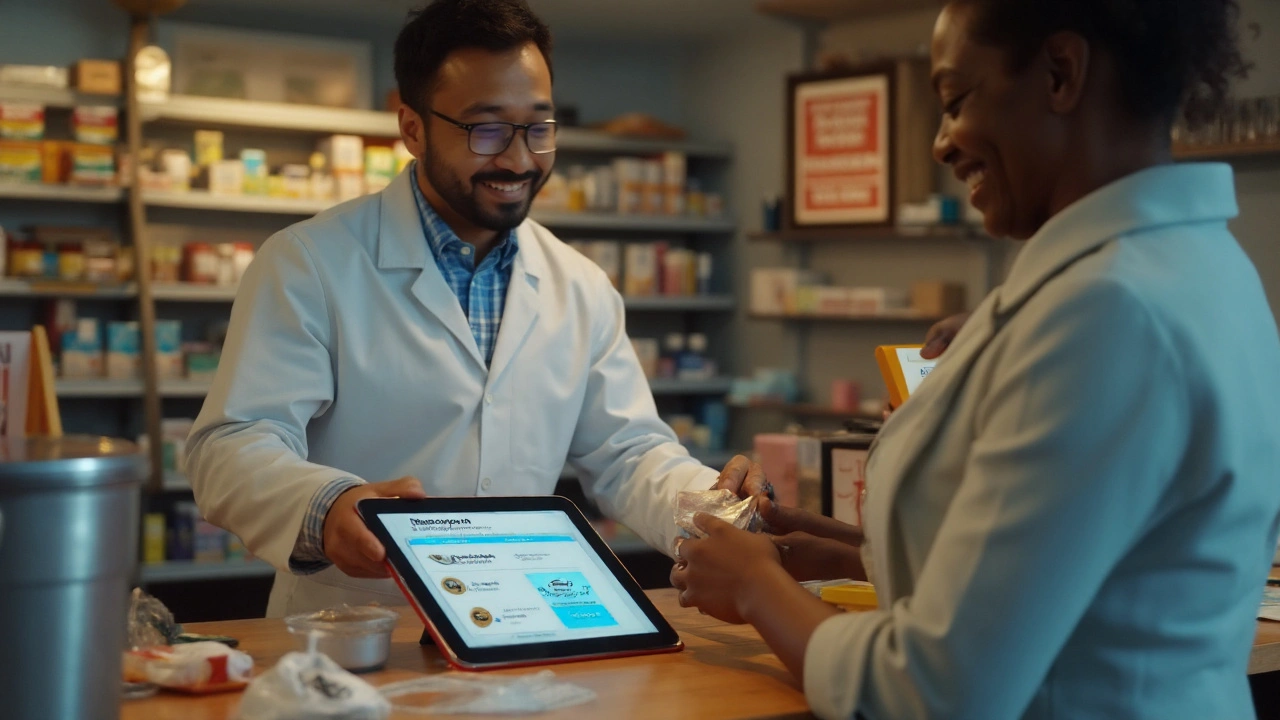
How to Check Out Today (Step‑by‑Step, with Scenarios, FAQ, and Fixes)
Here’s a simple flow you can follow from your couch. It works whether you’re in Seattle or anywhere else in the U.S.
- Get the prescription. Ask your oncologist or clinic to e‑prescribe tamoxifen to the pharmacy you choose, ideally for a 90‑day supply with refills.
- Pick your channel:
- Insured and stable on therapy? Use your plan’s mail‑order for a 90‑day fill.
- No insurance or high copay? Use a big chain’s online order with a discount card for the best cash price.
- Want one delivery and low hassle? Independent online pharmacies can be great-just verify licensing.
- Verify the pharmacy. Check state license, accreditation, and that a prescription is required.
- Compare prices. If paying cash, screenshot one or two discount prices at nearby pharmacies. If using insurance, check your plan portal for 90‑day copays.
- Place the order. Enter insurance (if using it), or select “cash price” and give the discount card details. Confirm the exact strength and quantity.
- Ask for the manufacturer you prefer. If you’ve done well on a specific version, request it. Pharmacies will try to match stock or note it for refills.
- On delivery: confirm the pill imprint and label match your prescription, check the lot and expiry, and store at room temperature.
- Set a refill reminder 10-14 days before you run out. Mail order can take 3-7 days.
| Pharmacy type | Rx required? | Accreditation typical | Typical 90‑day price (20 mg) | Shipping time | Best for | Risks |
|---|---|---|---|---|---|---|
| Insurer mail‑order (CVS Caremark/Express Scripts/OptumRx) | Yes | State board, URAC | $0-$15 | 3-7 days | Insured patients wanting 90‑day convenience | Occasional prior auths; plan rules change |
| Big‑box chain online (Walgreens/CVS/Walmart/Costco) | Yes | State board, NABP | $10-$25 (cash with coupon) | Same‑day to 3 days | Fast delivery, predictable stock | Price varies by location and coupon |
| Independent online pharmacy (licensed) | Yes | State board, sometimes NABP | $15-$30 (cash) | 2-5 days | Good service, transparent pricing | Verify license; shipping fees vary |
| Overseas/"no Rx" websites | No | None | Temptingly low | Unpredictable | None-avoid | Counterfeit risk, legal issues, safety concerns |
Quick checklist before you hit “Place Order”:
- Pharmacy is U.S.‑licensed and requires a prescription.
- Strength and quantity match your prescriber’s plan (10 mg vs 20 mg, 30 vs 90 days).
- Price confirmed (insurance copay or cash‑discount). No surprise “program fees.”
- Preferred manufacturer noted (optional but helpful).
- Delivery timeline fits your refill window (order when you have ~10-14 days left).
Mini‑FAQ
- Do I need a prescription in the U.S.? Yes. FDA‑approved pharmacies must have an Rx. If a site doesn’t ask, don’t use it.
- Is generic tamoxifen as good as Nolvadex? Yes. Generics must meet FDA bioequivalence standards to the brand.
- What’s a fair 2025 price? With a discount card, $4-$12 for 30 tablets of 20 mg at many chains. Mail‑order 90‑day copays through insurance are often $0-$15.
- Can I import it from abroad to save more? Not recommended. U.S. law around personal importation is narrow, and quality risks are high. Stay with U.S.‑licensed pharmacies.
- Why do my pills look different this refill? Different manufacturer. Check the imprint and call the pharmacy if you’re unsure. You can ask them to keep the same manufacturer next time.
- How long does shipping take? Usually 2-5 days. Order about two weeks before you run out.
Troubleshooting and Next Steps
- Price at checkout is higher than quoted: ask the pharmacy to re‑run it as a cash transaction with your discount, or try a different chain listed on your coupon. If insured, compare your copay to cash and pick the cheaper.
- Back‑order or stock issues: ask the pharmacist to substitute a different manufacturer or transfer to another branch. Tamoxifen is widely available; a short delay usually means a local stock issue.
- New side effects after a manufacturer switch: pause and call your oncologist or pharmacist. Differences in inactive ingredients can matter for some people.
- Insurance rejects a 90‑day fill: ask your prescriber to resend as 30‑day with refills, then switch to mail‑order once your plan allows.
- Need it urgently: choose a local chain with same‑day pickup for the first 30 days, then move future fills to mail‑order.
Ethical, safe CTA: Order from a state‑licensed U.S. pharmacy that requires your prescription. If you’re insured, check your plan’s 90‑day mail‑order price. If you pay cash, use a reputable discount card at a major chain and verify the final price before you pay. Keep your oncologist in the loop, and set a refill reminder so you never scramble.

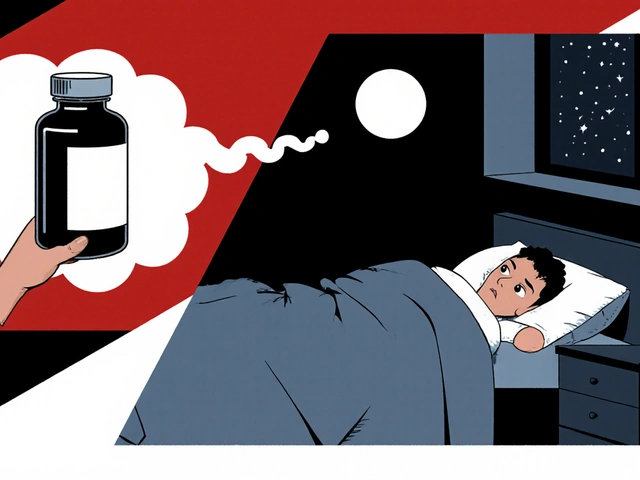
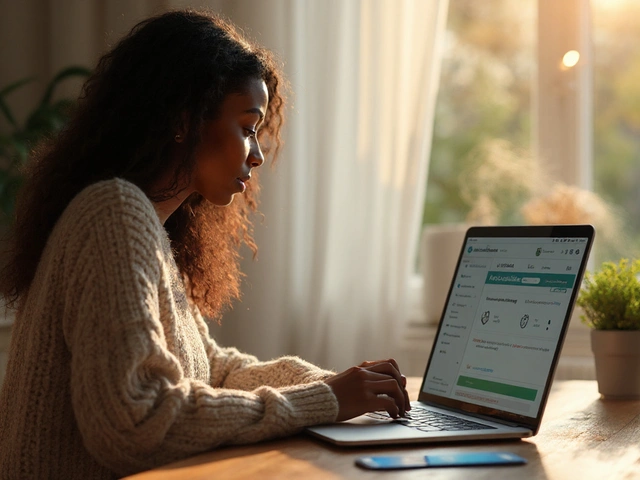

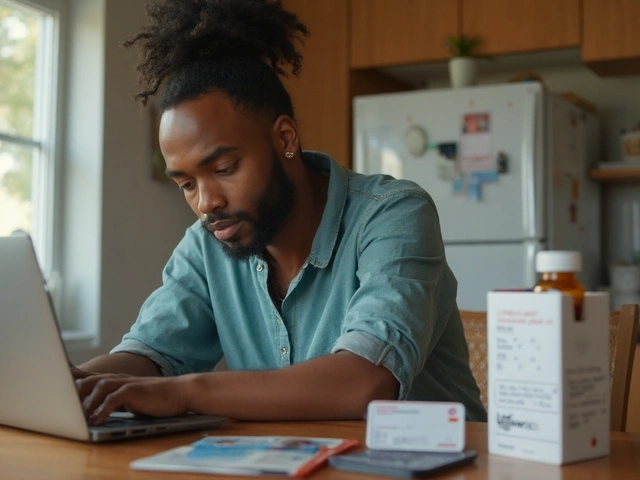
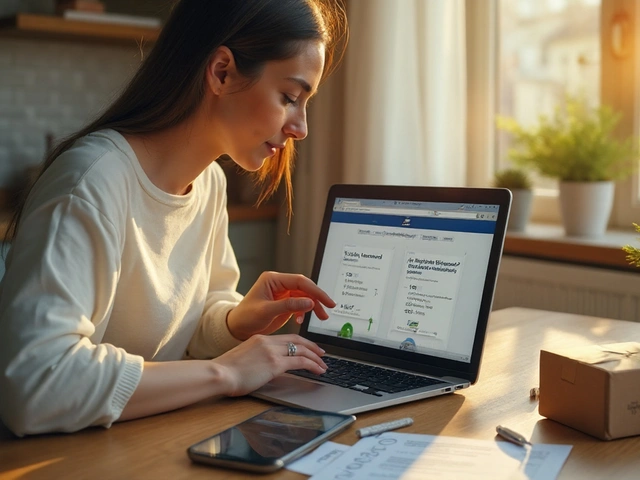
Start by confirming the pharmacy location and that they actually require an Rx before putting payment info in.
Screenshot the license number and the accreditation badge so you have proof if something goes sideways, and save the discount coupon image before checkout so the pharmacist can see exactly what you used.
When paying cash, ask the pharmacist to run the coupon as a cash transaction and compare that to your insurance copay because the cheaper option can change from month to month.
Request a 90‑day supply from the prescriber whenever clinically appropriate to lower per‑tablet cost and reduce shipping frequency.
August 22Rebecca Mikell